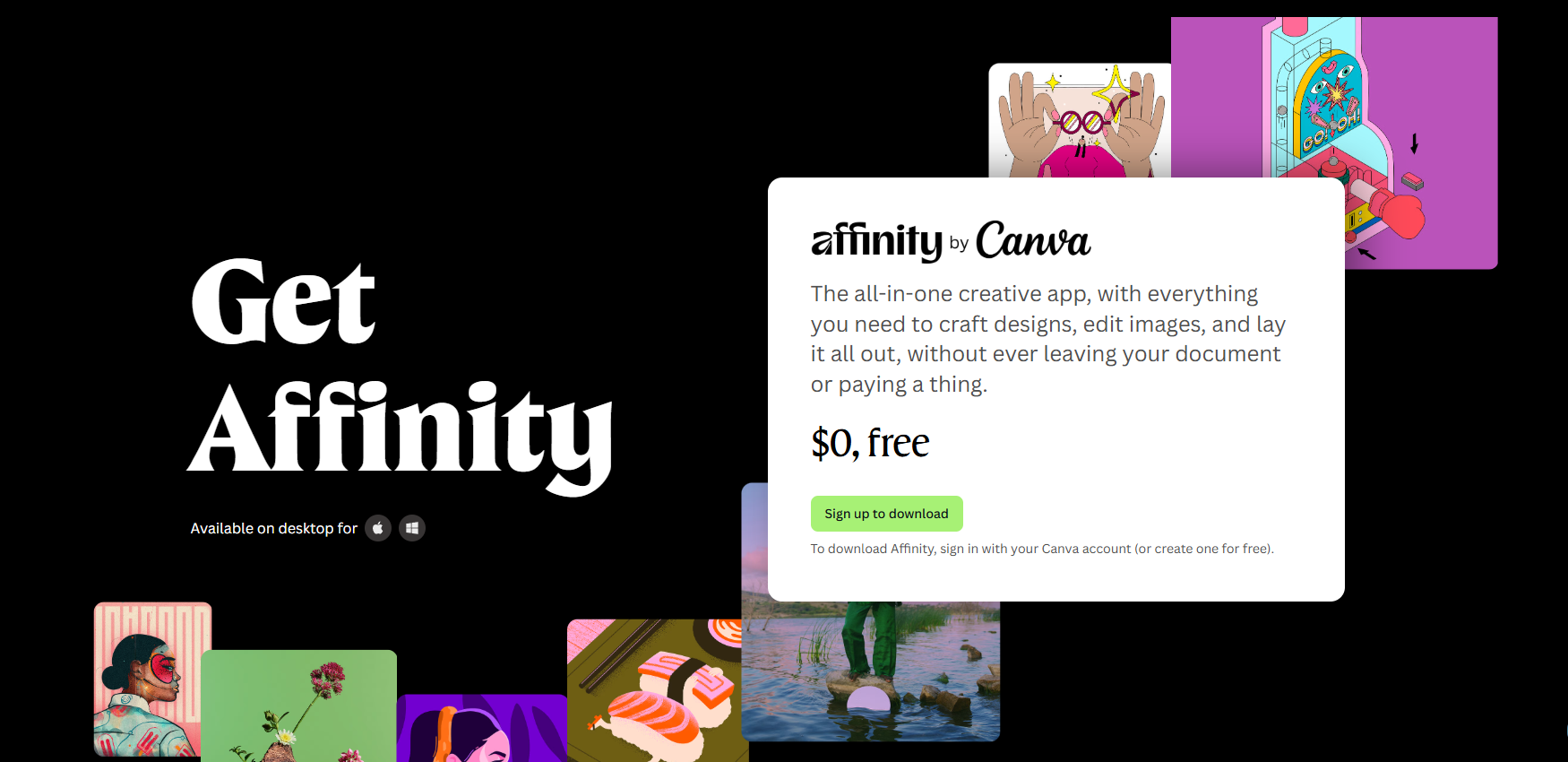Affinity Designer Announces New Business Model with Canva — Community Reactions Shift from Concern to Cautious Relief
In a major turns-the-page moment for professional design tools, Canva has revealed its new business model for Affinity Designer — the software formerly sold under a one-time license — and the reaction among users is evolving. This development follows early concerns in which many users expressed anxiety about the October 30 reveal.
According to the official announcement from Canva, the newly rebranded “Affinity” app (dropping the separate Photo, Designer and Publisher titles) is now available for Windows and Mac on a free-forever basis, with no subscription required for the core tools. The statement emphasized that existing owners of the older perpetual-license versions will continue to have access and are not being forced into a subscription. The announcement also highlighted that advanced AI-powered features (such as generative fill, background removal and export to Canva) will sit behind optional Canva Premium subscriptions, aligning monetization around optional services rather than core functionality.
Initial Fears and User Backlash
In the lead-up to the reveal, the Affinity community had voiced strong concerns about a possible shift toward a subscription model like that of Adobe Creative Cloud. Threads on Reddit’s r/graphic_design and the official Affinity forum flagged the acquisition by Canva and the signalling of a major announcement as a potential industry pivot away from the beloved one-time-purchase licence. Many professionals had publicly stated they preferred Affinity because it offered perpetual ownership rather than renting software. They worried that integration into Canva’s business model would remove that optionality and force subscription dependence.
Shift in Sentiment After the Reveal
In contrast to those earlier worries, many users now appear somewhat reassured by the official positioning. Design-media outlets such as TechRadar described the move as “bold” and pointed out that making the core tool free challenges Adobe’s dominance and may provide real value for freelancers and hobbyists. On Reddit and in user forums, comments now reflect a more balanced tone: while some express relief that the perpetually-licensed versions remain supported, others still raise questions about long-term support, feature development and how much reliance on Canva’s ecosystem will grow. For example, one thread notes: “It’s free but… are we still in control of our workflow?”
What the New Model Means in Practice
Under the new business model, Affinity becomes a free-to-use professional design app with the following key changes: it merges the separate Designer, Photo and Publisher apps into one unified app; it keeps the core toolset free; and it offers advanced AI-powered or cloud-integrated features as optional pay-gates via Canva Premium. For existing users with old licences, the announcement specifies they will continue to use those versions, but uncertainty remains about how long support updates will be maintained. The update marks a pivot away from a pure perpetual-purchase model towards a hybrid freemium model — a significant shift for a tool known for its one-time licence pricing.
Community Concerns and Outstanding Questions
Although many users express relief, the community has not fully let go of its anxieties. Some designers question whether the free tier will continue to receive major updates or if new feature development will favour the AI-enabled premium tier. Others worry existing files and workflows might be impacted by integration with Canva’s ecosystem or export pathways. A persistent theme: “Are we still independent or becoming subsumed into Canva’s platform strategy?” Forum posts hint at caution: users are still “watching closely” for how licensing, file compatibility and updates evolve under the new model.
What This Means for the Design Software Landscape
The announcement places Affinity and Canva directly in competition with Adobe, offering a compelling alternative for designers seeking a high-quality tool without the recurring subscription cost. Analysts suggest this could shift the market’s expectation for design software pricing and ownership models. For freelancers, small studios and hobbyists, the free core app may unlock new capability without financial commitment. At the same time, the new model highlights the increasing role of AI-services as monetisation mechanisms within creative software.
In summary, the new business model for Affinity under Canva appears to have transformed fear into cautious optimism among many users. While the legacy of the perpetual-license model remains intact for now, the broader trajectory of the software and its ecosystem will be under scrutiny in the months ahead. For designers, the message is clear: the tools remain accessible, but the business model has evolved — and how you engage with it may define your workflow going forward.

